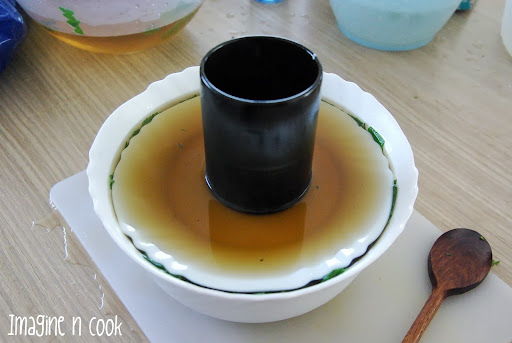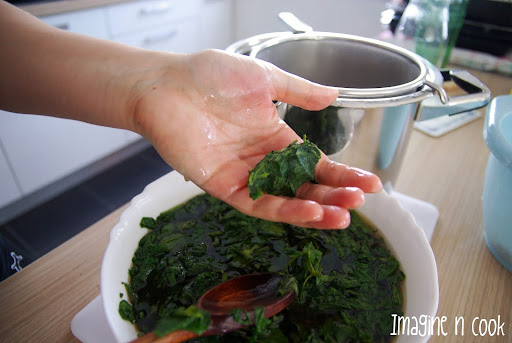 Recently we've been more into the good old stuff :), the juices, marmalade's, dishes and recipes our grandmothers did. We're again devoting ourselves to the vertical garden and growing our own vegetables organically. We started analyzing medicinal herbs and wild fruits to treat common diseases or problems, without the usage of drugs.
Recently we've been more into the good old stuff :), the juices, marmalade's, dishes and recipes our grandmothers did. We're again devoting ourselves to the vertical garden and growing our own vegetables organically. We started analyzing medicinal herbs and wild fruits to treat common diseases or problems, without the usage of drugs.Spring in general is a great time to collect several herbs, however an inexperienced eye might take the wrong ones. That's why there's a safe bet for you - Wild Stinging Nettle. A multifunctional herb that is both good for you and your plants/vegetables. Full of vitamins K, B2 and C; minerals such as magnesium, potassium and calcium; Nettle is a great source of fundamental substances your body will benefit from.
In Croatia and all Eastern Europe, nettle was used since long ago in folk medicine as a remedy for renal and liver problems - such as inflammations, kidney and bladder stones, anemia. It's roots were even used as the main substance to prevent hair fall, while the extract is used to regulate sugar levels in the blood. Moreover in agriculture - soaked overnight in a bucket of water it becomes a great insecticide. Left in water for 3-5 days and it dissolves into a natural and powerful compost for your plants. Boiled for a few minutes and it's a natural resource of iron and minerals, which your body will benefit from.
In this post you will find an easy and tasty Syrup recipe, which then diluted with water makes a yummy, healthy and refreshing juice. Try it before you say no :) they say healthy things taste bad - well this one for sure doesn't! ;)
Before writing down more about this herb, here the recipe for Nettle juice, for all those who already know enough about it :). For those who don't, you can read more lower in this post, or search the Internet for it.
Remember that if you're using wild stinging nettle as food you should always pick it up in a clean spot, away from vehicle exhausts. Also, always pick just the fresh new leaves, that means just the tip along with the first three leaves. The older leaves have too much acid to be consumed orally. This recipe uses
STINGING NETTLE SYRUP
Total time: 40'-60' (~30' cleaning/chopping)
Makes: 2 L
Difficulty: easy
Usage: juice: 1/4 syrup + 3/4 water (or according to taste)
Ingredients:
- 2 bags of wild stinging nettle young leaves (~300-500 gr)- juice of 6 big lemons
- 800 gr of sugar
- 5 big spoons of flower honey
- 1 L of filtered water
Sugar
I know this sounds like a lot of sugar, but it's amount makes this a syrup instead of juice. The more sugar it has the more it will last. You can use just 300gr of sugar if you want, but that means you have to use it up in a week.
You can substitute part of the sugar with honey (1kg of honey) but then try not boil the whole jar of honey (it will reduce it's benefits). Instead add the honey after you filtered the nettle juice.
Water
Make sure you use quality water, not just regular tap water, makes it better ;).
Stinging Nettle
Only the lower leaves and the old part of the stem stings pretty hard, the rest is more of a light touch. But if you want to avoid that, and you don't have kitchen gloves like I didn't :), you can always use a thicker small plastic bag (like the freezing bags) to protect you hands.
- Wash the nettle leaves and chop them roughly into a couple of pieces. If you picked the nettle the day before, cut away the stem where you picked it.
Place the chopped leaves in a heat resistant bowl, preferably in a glass or ceramic one.
While you're washing and cutting the leaves you can boil the water and preheat the oven to prepare the bottles where you'll store the syrup.
- Put the water to boil, along with the sugar. Here I used 500 gr of brown sugar and 300 of white sugar. Make sure you stir the water from time to time, since the sugar will fall down on the bottom where it can burn up, and it needs to melt where stirring will help.
Remove any foam that might rise up on the surface.
- Once the water boiled, turn down the heat and let it rest covered for 5 minutes.
- Sterilize the glass bottles.
Wash the glass bottles you'll use to store the syrup, and place them in the oven on 150°C for 15 min. This will help killing all the germs and bacteria, but mind to use only clean glass bottles without any other accessories like stoppers, paper or similar. - Once the 5 minutes passed cover the nettle with the hot liquid just enough to cover the nettle. Spare some liquid in the pot.
- Place a heat resistant lid/plate on top and press it down to ensure the nettle is covered. You can even use a weight on top. Let it rest for 10 minutes.
- Melt the honey in the rest of the liquid you set aside. Add the lemon juice too. If you wish to have a clear syrup, make sure you strain the lemon juice for any lemon residues.
- When ten minutes passed squeeze the nettle from all the liquid. You can do that using you hands (it should be doable, but watch the temperature - it might be too hot to handle) or using a cheesecloth over a strainer.
If you use your hands and the leaves are too hot, you can take up the leaves using a wooden spatula with one hand, while you squeeze the previously lifted ones with the other hand. This will make the process faster, since you squeeze one while the other is cooling down on the spatula.
Don't throw away the rest of the leaves, you can use it for shakes, spinach stew or even chop it and make nettle bread. Anyhow it still has a lot of potential ;)
- Once you squeezed all the leaves, pour the liquid back in the pot over a strainer and mix well.
- The syrup is now done. Take out the glass bottles from the oven (care it's hot) and pour the syrup in. Close them with the stopper (which you previously cleaned with medicinal alcohol (at least 70%) and set aside to cool. Store it in a dark and cool place.
- Mix the syrup with water to make the juice according to taste (my amount is 1/4 syrup, 3/4 of water), and enjoy it in the months to come :).
This syrup will last for at least 6 months, but that's ofc if you manage not to drink it all before that :D.
- TIPS:
- Use plastic bags to protect your hands from the stings.
- Always sterilize the glass bottles, and fill them while still hot from the oven, with still hot liquid.
- Don't boil the honey, instead melt it in hot but not boiling liquid.
- Use less sugar if you wish to, but mind the syrup will then last only a week or so.
- Use the strained leaves in a shake, smoothie, bread pastry, soups or vegetable stews.
- Use the rest of the plant (older leaves) to make the insecticide or compost to water your plants.
- Pick only young leaves of plants that didn't yet flower.
- Dry the younger leaves for a nettle tea.
As promised, here's more about this herb on the web:
- "Nettles are slightly bitter, salty, cool and dry. It contains protein, beta-carotene and xanthophylls, vitamins B, C, E K, flavonoids (quercitin, rutin, kaempferol, rhamnetin), calcium, chromium, iron, silica, formic acid (which causes stinging), betaine, mucilage, tannin, chromium, silica, chlorophyll, albuminoids, agglutinin, amines (histamine, acetylcholine, serotonin, 5-hydroxy- aliphatic acid), hydroxycoumarins, mucilage, saponins (lignin and sitosterol), glycosides, and tannin.
Nettles lose their sting if pureed, dried or cooked. Nettles surpass spinach in nutritional content yet can be substituted for any recipe using cooked spinach, as well as beet greens, chard or turnip greens. Young tender shoots are edible cooked as a potherb, steamed, in soups. Pink underground stems are edible. Nettle beer, wine and vinegar are wonderful. Drink fresh nettle juice. The juice was once used to curdle milk. Nettle tea has a strong pleasant flavor that tastes mineral rich. Hang a bunch of nettles in the kitchen to deter flies. The dried leaves can be sprinkled on salads, soups and vegetables for their mineral rich salty flavor."
Read more.
- "Nettle leaf is among the most valuable herbal remedies. Because of its many nutrients, stinging nettle is traditionally used as a spring tonic. It is a slow-acting nutritive herb that gently cleanses the body of metabolic wastes. It is one of the safest alternatives, especially in the treatment of chronic disorders that require long-term treatment. It has a gentle, stimulating effect on the lymphatic system, enhancing the excretion of wastes through the kidneys."
Read more.














Your work certainly pens its expertise in showcasing the actual points and the world has always welcomed such passionate writers who have never felt afraid in writing the exact thing with such brilliance. Always follow your heart.
ReplyDeletemineral water project
Thank you! :)
DeleteNice :-)
ReplyDelete